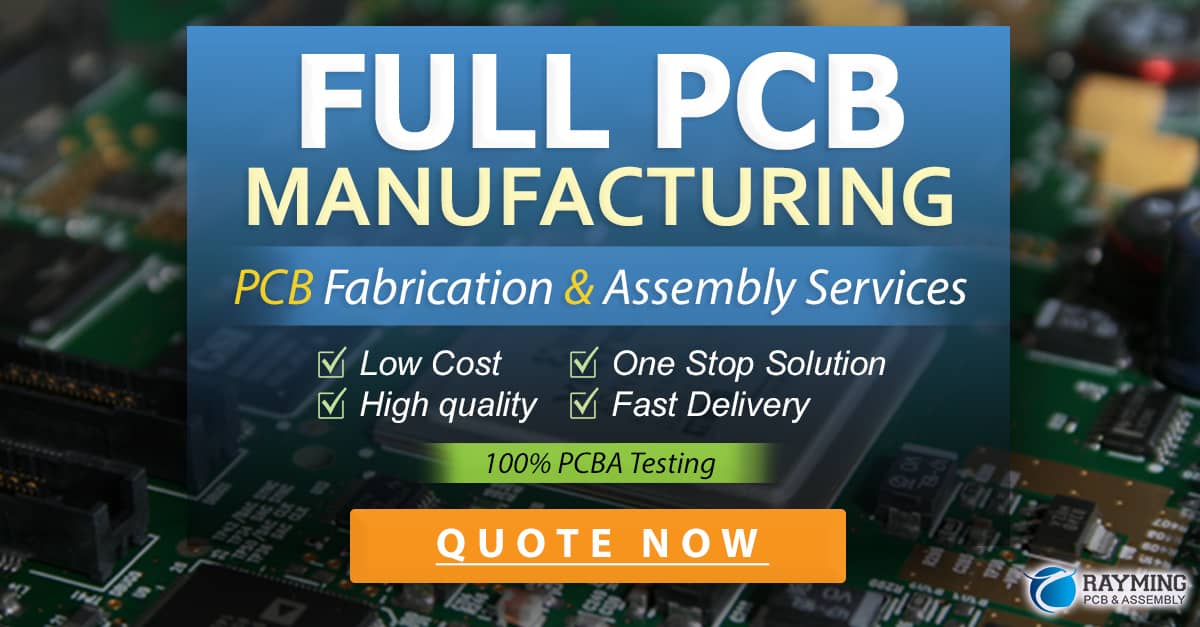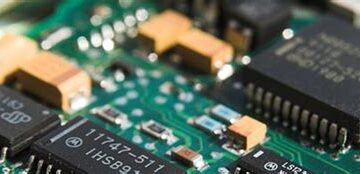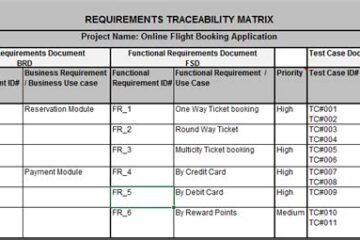Introduction to PCB Imaging
Printed Circuit Board (PCB) imaging is a crucial step in the manufacturing process of electronic devices. It involves transferring the designed circuit pattern onto the copper-clad laminate, which serves as the foundation for the PCB. Various methods are employed for PCB imaging, including screen printing, photolithography, and dry film imaging. In this article, we will focus on the dry film imaging technique, its advantages, process, and applications.
What is Dry Film Imaging?
Dry film imaging, also known as dry film photoresist (DFR) imaging, is a popular method for transferring the circuit pattern onto the PCB. It involves applying a light-sensitive polymer film onto the copper-clad laminate, exposing it to UV light through a photomask, and developing the exposed areas to reveal the desired circuit pattern. The unexposed areas of the film are then removed, leaving behind a protective layer that resists the etching process.
Advantages of Dry Film Imaging
Compared to other PCB imaging methods, dry film imaging offers several advantages:
- High resolution: Dry film imaging can achieve fine feature sizes and high-resolution patterns, making it suitable for dense and complex PCB designs.
- Excellent adhesion: The dry film photoresist forms a strong bond with the copper surface, reducing the risk of delamination during the etching process.
- Ease of use: Dry film imaging is a relatively simple process that can be easily automated, reducing the need for skilled labor and minimizing human error.
- Consistency: The uniform thickness of the dry film ensures consistent imaging results across the entire PCB surface.
- Cost-effectiveness: Dry film imaging is a cost-effective method for high-volume PCB production, as it requires minimal setup time and material waste.
The Dry Film Imaging Process
The dry film imaging process consists of several steps, each of which is critical to achieving high-quality PCB imaging results.
Step 1: Surface Preparation
Before applying the dry film photoresist, the copper-clad laminate must be thoroughly cleaned and prepared. This typically involves the following sub-steps:
- Degreasing: The copper surface is cleaned with a degreasing agent to remove any oils, dirt, or contaminants that may affect the adhesion of the dry film.
- Microetching: A mild etching solution is used to roughen the copper surface slightly, improving the bond between the copper and the dry film.
- Anti-tarnish treatment: An anti-tarnish solution is applied to prevent oxidation of the copper surface, which can degrade the imaging quality.
Step 2: Dry Film Lamination
Once the copper surface is prepared, the dry film photoresist is applied using a lamination process. This involves the following sub-steps:
- Film placement: The dry film is placed on the copper surface, with the protective polyester cover facing upwards.
- Lamination: The PCB and dry film are passed through a laminator, which applies heat and pressure to bond the film to the copper surface.
- Protective cover removal: After lamination, the protective polyester cover is peeled away, leaving behind the light-sensitive photoresist layer.
Step 3: Exposure
The laminated PCB is then exposed to UV light through a photomask, which contains the desired circuit pattern. The exposure process involves the following sub-steps:
- Photomask alignment: The photomask is aligned with the PCB to ensure accurate pattern transfer.
- UV exposure: The PCB is exposed to UV light for a specific duration, depending on the photoresist’s sensitivity and the light source’s intensity.
- Photochemical reaction: The UV light triggers a photochemical reaction in the exposed areas of the photoresist, causing it to become soluble in the developer solution.
Step 4: Development
After exposure, the PCB is developed to remove the soluble areas of the photoresist, revealing the desired circuit pattern. This involves the following sub-steps:
- Developer application: The PCB is immersed in a developer solution or sprayed with the developer, which dissolves the exposed areas of the photoresist.
- Rinsing: The PCB is rinsed with water to remove the dissolved photoresist and stop the development process.
- Drying: The developed PCB is dried using air or a mild heat source to remove any remaining moisture.
Step 5: Etching
With the circuit pattern now visible on the copper surface, the PCB undergoes an etching process to remove the unwanted copper. This involves the following sub-steps:
- Etching solution: The PCB is immersed in an etching solution, typically ferric chloride or ammonium persulfate, which selectively removes the copper not protected by the photoresist.
- Rinsing: After etching, the PCB is rinsed with water to remove the etching solution and halt the etching process.
Step 6: Stripping and Cleaning
Finally, the remaining photoresist is stripped away, and the PCB is cleaned to reveal the final circuit pattern. This involves the following sub-steps:
- Stripping: The PCB is immersed in a stripping solution, which dissolves the remaining photoresist.
- Cleaning: The stripped PCB is cleaned with water and dried to remove any residues.
Applications of Dry Film Imaging
Dry film imaging is widely used in various PCB manufacturing applications, including:
- High-density interconnect (HDI) PCBs: Dry film imaging’s high resolution and fine feature capabilities make it ideal for producing HDI PCBs with tight pitch and small via sizes.
- Multilayer PCBs: The excellent adhesion and consistency of dry film imaging ensure reliable interlayer connections in multilayer PCB constructions.
- Flexible PCBs: Dry film imaging can be used on flexible substrates, enabling the production of flexible circuits for wearable electronics and other applications.
- Radio frequency (RF) PCBs: The high-resolution patterns achievable with dry film imaging are essential for producing the precise geometries required in RF PCB designs.

Troubleshooting and Optimization
While dry film imaging is a reliable and consistent process, various factors can affect the imaging quality. Some common issues and their solutions include:
- Incomplete development: If the photoresist is not fully developed, it can lead to incomplete pattern transfer. This can be addressed by adjusting the developer concentration, temperature, or dwell time.
- Overexposure or underexposure: Incorrect exposure times can result in poor pattern definition or loss of fine features. Optimizing the exposure time and light intensity is crucial for achieving the desired results.
- Lamination defects: Issues such as air bubbles or poor adhesion can occur during the lamination process. Proper laminator settings, film handling, and surface preparation can help minimize these defects.
- Etching problems: Uneven or excessive etching can lead to pattern distortion or open circuits. Maintaining the correct etching solution concentration, temperature, and agitation can help ensure consistent etching results.
Future Trends in PCB Imaging
As PCB technology continues to advance, new imaging techniques and materials are being developed to meet the growing demands for higher resolution, greater reliability, and improved environmental sustainability. Some notable trends in PCB imaging include:
- Direct imaging: This technique uses laser-based systems to directly expose the photoresist, eliminating the need for photomasks and enabling faster, more flexible imaging processes.
- Inkjet imaging: Inkjet printing technology is being adapted for PCB imaging, allowing for the direct deposition of conductive inks or photoresists onto the substrate.
- Environmentally friendly materials: There is a growing focus on developing biodegradable and low-toxicity photoresists and processing chemicals to reduce the environmental impact of PCB manufacturing.
Conclusion
Dry film imaging is a vital process in the production of high-quality, reliable PCBs. Its advantages, including high resolution, excellent adhesion, and consistency, make it a preferred choice for a wide range of PCB Applications. By understanding the dry film imaging process, troubleshooting common issues, and staying informed about future trends, PCB manufacturers can optimize their imaging capabilities and stay competitive in the ever-evolving electronics industry.
Frequently Asked Questions (FAQ)
1. What is the difference between dry film and liquid photoresist?
Dry film photoresist is a solid, light-sensitive polymer film that is laminated onto the PCB surface, while liquid photoresist is a liquid that is spin-coated or sprayed onto the PCB. Dry film offers advantages such as uniform thickness, better adhesion, and ease of handling, while liquid photoresist is more suitable for complex topographies and fine-pitch applications.
2. Can dry film imaging be used on both rigid and flexible PCBs?
Yes, dry film imaging can be used on both rigid and flexible PCB substrates. However, the choice of photoresist and lamination conditions may need to be adjusted to account for the different material properties and processing requirements of each substrate type.
3. How does the resolution of dry film imaging compare to other PCB imaging methods?
Dry film imaging can achieve high resolutions, typically in the range of 25-50 microns, depending on the photoresist and imaging equipment used. This is comparable to the resolution achievable with liquid photoresist imaging and higher than that of screen printing methods.
4. What factors influence the choice of dry film photoresist for a given application?
The choice of dry film photoresist depends on several factors, including the desired feature size, aspect ratio, substrate material, and processing conditions. Other considerations include the photoresist’s sensitivity, adhesion properties, and compatibility with downstream processes such as etching and plating.
5. How can the environmental impact of dry film imaging be minimized?
To minimize the environmental impact of dry film imaging, PCB manufacturers can adopt several practices, such as using biodegradable or low-toxicity photoresists and processing chemicals, implementing closed-loop systems for waste management, and optimizing the imaging process to reduce material consumption and energy usage. Additionally, investing in advanced imaging technologies, such as direct imaging or inkjet printing, can help reduce waste and improve resource efficiency.
| PCB Imaging Method | Resolution (microns) | Advantages | Disadvantages |
|---|---|---|---|
| Dry Film Imaging | 25-50 | High resolution, excellent adhesion, consistency | Limited flexibility for complex topographies |
| Liquid Photoresist | 10-25 | Suitable for fine-pitch and complex patterns | Requires precise coating control, potential for thickness variations |
| Screen Printing | 100-150 | Low cost, high throughput | Lower resolution, limited feature size |
| Direct Imaging | 15-30 | Maskless, high speed, flexibility | Higher equipment cost, potential for laser interference |



0 Comments